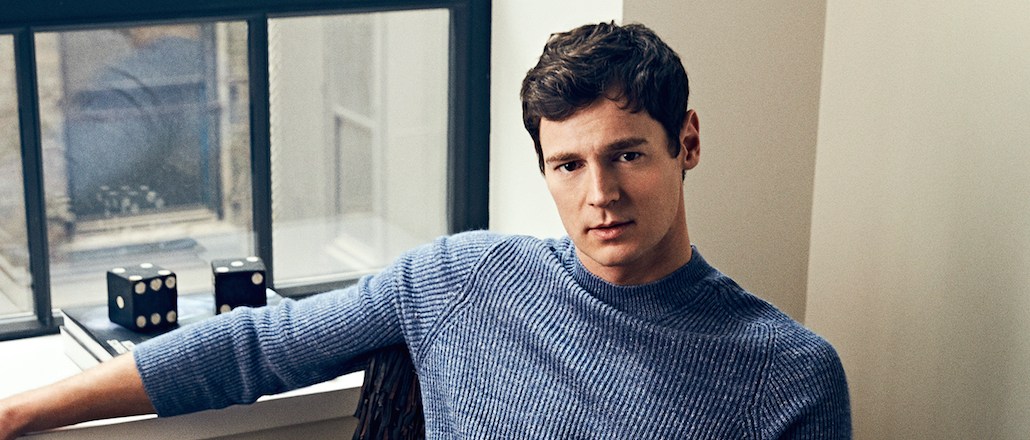Men’s style brand Mr Porter creates daily content to drive scale and, ultimately, sales

Producing quality, slick editorial content on men’s style has been bread and butter for online men’s fashion brand Mr Porter for some time. Now it wants to ramp up production.
An online retail destination, which stocks around 300 designer brands, Mr Porter also publishes a weekly web magazine, called The Journal, and publishes the Mr Porter print magazine six times a year. But to get people coming back to the site more regularly, it’s now creating daily, “bite-sized” content, which it will publish three times a day to fit in better with men’s daily media and living routines.
The new content is all housed in a new part of the site, a vertical called The Daily, where stories are scheduled to time with typical commuter hours: 7 a.m., lunch time and early evening.
“The Daily will become our biggest content platform. The Journal will be our prestige publication, but The Daily will be very important in gaining mass reach,” said Jeremy Langmead, the brand and content director at Mr Porter. So far so good: In the three weeks since launch, The Daily has generated 175,000 more pageviews, according to internal figures, raising the overall traffic to Mr Porter by 28 percent.
MrPorter.com claims it has 2.5 million monthly uniques globally. ComScore puts its figures at 65,000 monthly visitors in the U.K. and 374,000 globally, although Mr Porter doesn’t tag its pages for comScore tracking for mobile.
Naturally, a good chunk (67 percent) of The Daily’s new traffic has been driven by social media, mainly Instagram, where it has an audience of 670,000 people, Twitter and Facebook, where it has an audience of just under 500,000. Mr Porter doesn’t reveal any e-commerce figures, though it has had 450,000 customers to date, and Langmead said that Facebook is a major sales driver for the brand.
Typical daily fare includes “Is there a bit of Patrick Bateman in all of us?” pegged to the premiere of American Psycho, the musical, as well as pieces on “How to Make the Perfect Mint Julep, or Three.” But the plan is to provide content that’s relevant to either trending worldwide topics, or events like the Met Gala in New York last week, for which it ran “Three Tuxedos of the Future.”

The Daily operates with a light staff. Former Mr Porter deputy editor Adam Welch has been made editor of The Daily. He oversees another Mr Porter editorial staff member and will soon hire a design editor and a copy editor in the coming months. Freelancers and other Mr Porter editorial staff also contribute articles.
The brand doesn’t plan to overload readers with content: It will publish around four articles a day to start, and a couple of 90-second how-to videos a week.
Mr Porter has high video-production costs, according to Langmead, which means it goes for a less-is-more approach. But it wants to do more with video on Facebook and is looking closely at how to experiment with Facebook Live, though no plans are firmly in place yet.
Much of the Mr Porter user experience is couched in stylish aspirational and advice content for its readers, so they aren’t made to feel like they’re being pushed to buy. But ultimately, The Daily is also expected to generate sales, which Langmead is confident it will.
All the content will feature images of products, which link to the e-commerce shop at the foot of the articles, along with a dash of wit, wherever possible, he added.
“We had an article go up on the best spaghetti meatballs in the world, and had links out to the best outfits for eating spaghetti in to give it a bit of humor,” he said. “It’s important not to push them.”
Images: Courtesy of Mr Porter: taken by photographer Bjorn Iooss.
More in Media

Podcast companies turn to live events to capture growing advertiser spend
The surge in the number of live podcast events in 2025 reflects a broader shift: advertisers are betting bigger on podcasts — not just as an audio channel but as a full-fledged creator economy play.

Media Briefing: ‘Cloudflare is locking the door’: Publishers celebrate victory against AI bot crawlers
After years of miserably watching their content get ransacked for free by millions of unidentified AI bot crawlers, publishers were finally thrown a viable lifeline.

How Vogue could navigate potential industry headwinds as Anna Wintour — who agency execs say made ad dollars flow — brings on new edit lead
Anna Wintour’s successor at Vogue will have to overcome the myriad of challenges facing fashion media and the digital publishing ecosystem.





